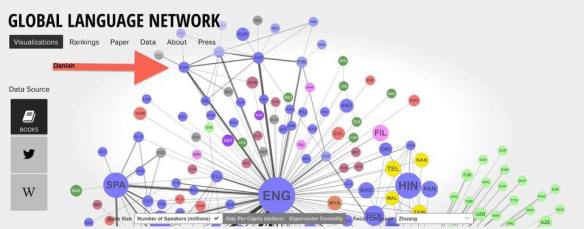
<< This is a post that I started some time ago and it suits perfectly for today, 21 February, International Mother Language Day.
Kalaallisut (Greenlandic) is not my mother tongue, but I am learning it because it is the mother tongue of the country I call home and because it is the primary language of many friends and ‘in-law’ family members. As part of the International Mother Language Day celebratory events, Oqaasileriffik – The Language Secretariat of Greenland interviewed foreigners learning Kalaallisut and created posters out of their replies. See mine here 🙂 >>
Truth: Kalaallisut, the Greenlandic language, is said to be one of the hardest, most complex languages in existence due to its polysynthetic nature. It adds derivative after derivative after derivative – up to 12! – to a root (like a verb or noun) to modify meaning, and the letters change based on the last letter of the derivative preceding it, if they are not dropped, or ‘eaten’, altogether. Words look very long and repetitive with several double letters, but they are, in fact, whole sentences. Transitive verbs (with both a subject and an object, such as “I saw him”) have a different derivative ending for each possible relationship (I-you / I-him,her,it / we-you all), and they also change based on tense (present, past, conditional). And yes, their letters, too, change based on the last letter of the derivative preceding it. All in all, there are upwards of 200 different possibilities just to express the transitive relationship between subject and object!
Basically, you rarely see the exact same combination twice. Linguists say that is one of the reasons it is difficult to learn Kalaallisut (Greenlandic) by ear, because you only hear the same combinations 4% of the time whereas in languages like English or the Romance languages, you hear the same combinations something like 20-25% of the time.
And the pronunciation, well, despite all the letters look like the standard English alphabet (which is more than can be said for Danish with its ø, æ and å), they combine in ways that make four sounds very different from other languages (the -q- sound, the -ll- or -rl- sound, the -gg- sound and the -rr- sound). The Q is nearly a glottal stop, similar to that found in Hawaiian, for example, while the others are made with a special placement of the tongue. Many people say you have to spit a little to make the sounds properly 🙂
BUT
Also truth: Kalaallisut (Greenlandic) can sometimes be very exact and to the point, without need for fluff and filler. And once you know the rules, you can do a lot! There are also a lot of abbreviations/shortening of words and exclamations, and it is these which get especially engrained in the brain.
For example, “Torrak!” is a way to express a high level of agreement, excitement, happiness, support or satisfaction with something – it’s basically the universal word of positivity. When I travel to other countries, I still have this word in front of all others in my brain, so if I don’t accidentally blurt out “Torrak”, I sort of stumble looking for the right word that expresses the same meaning. Should I just say, “Super!” or “Great!”? That just sounds funny to me now.
I present 6 times the Kalaallisut (Greenlandic) way of saying something (usually as slang) is easier than other languages (i.e. English or Danish, in this country’s case).
ALUUGOOQ –“Say hello for me” or “Send my greetings”
SULI – “Same status” / “nothing has changed”
SALL’ – “You’re joking right” / “you’re lying” / “you’ve got to be kidding me”
TUSAS – “Talk to you later”
USORN – “I’m so jealous!”
QAA – Three totally different meanings: “Great suggestion, let’s do that!” OR “Come on, quit playing” / “Give me a break” OR “Come!” like a command to a child
For more information regarding Kalaallisut (Greenlandic) language-learning resources, see the “Language” section on my Tips for Tourists page.
